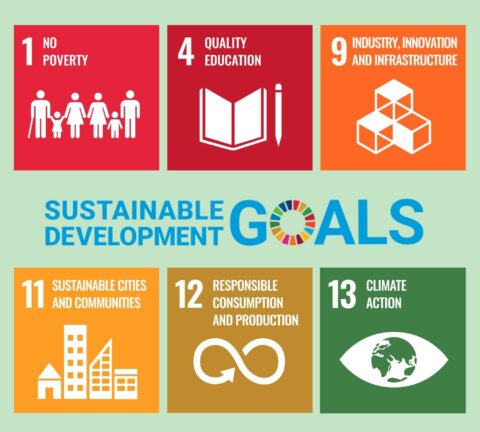If every organization in the world took care of their Scope 1 and Scope 2 emissions, there would be no such thing as Scope 3 emissions. And if that sentence requires some unpacking, you’ve come to the right place. What follows is a simple explainer of the three scopes, drawn directly from the GHG Protocol source documents and clearly referenced throughout.
First, Scopes 1 and 2
The three scopes of emissions — Scope 1, Scope 2, and Scope 3 — were established in 1998 by the Greenhouse Gas Protocol, a global partnership between businesses and NGOs to create standards for emissions accounting. Those standards have become increasingly detailed over the last two decades. With the landmark Paris Agreement to take action against climate change in 2015, they have become the primary method for businesses to track progress toward emission-reduction goals.
Scope 1 emissions, also called direct emissions, are those created by company facilities and vehicles. If your factory has a smokestack, this counts what comes out of it. So far, so good.
All the other Scopes are indirect, so they require a bit more explanation. Start with Scope 2 emissions, which cover the energy your factory uses. The processes to generate this energy likely created emissions, so you need to track all “purchased or acquired electricity, steam, heat and cooling.”
Scopes 1 and 2 are the natural place to start accounting for and reducing GHG emissions. For instance, a company can reduce Scope 2 emissions by purchasing low-carbon energy and investing in more efficient equipment. It’s increasingly expected that all companies will track Scope 1 and 2, and it’s all but certain the Securities and Exchange Commission will soon mandate these disclosures from companies operating in the United States. (More information about these scopes can be found on page 25 of the GHG Protocol Corporate Accounting and Reporting Standard.)
But even taken together, these two scopes rarely account for a majority of a company’s emissions. Scope 3 emissions are where the real work begins.
Scope 3, or everything else
Scope 3 emissions include pretty much everything that happens outside the walls of a company’s office or factory. They include all value chain activities, which means everything done to acquire and process the raw material upstream of production as well as the distribution, storage, use, and end-of-life downstream of production. If your company produces orange juice, that means you need to think about everything from the exhaust from the tractor used to harvest the oranges to the power for the fridge in your customer’s kitchen.
To use a non-technical term, it’s mind-boggling. (It’s also the subject of a separate 152-page Corporate Standard from the GHG Protocol.)
But Scope 3 is where the world is heading. Though SEC regulations may not immediately require Scope 3 climate-related disclosures for companies operating in the United States, it’s a safe bet they eventually will. In Europe, the Corporate Sustainability Reporting Directive that comes into effect in 2024 covers “value chain due diligence” for all large companies operating in the EU, which effectively means Scope 3. And there’s a carrot with the stick: Beyond regulatory requirements, performing a full Scope 3 inventory will help companies pinpoint where energy, material, and resource use can be optimized along the supply chain to improve efficiency and reduce costs.
How Green Standards can help with Scope 3
Scope 3 emissions are divided into 15 distinct categories, eight of which are upstream (generated by the goods & services you buy) and seven of which are downstream (generated by the goods & services you sell). Each of these categories has its own accounting rules and generally requires auditable data streams to prevent greenwashing or double counting.
The upstream emissions include:
As the above overview illustrates, Scope 3 emissions are designed to capture the entire economy on a carbon balance sheet. It is the monumental economic task of our era, a hugely complex endeavor that represents humanity’s collective, data-driven strategy to mitigate the climate crisis.
- Purchased goods and services: All the upstream emissions from anything you’ve bought, defined as “cradle-to-gate.” That means all the greenhouse gases produced right up until items like office furniture and computers cross the “gate” of the store and become yours.
- Capital goods: Like the above, but specifically covering the machinery and equipment used to manufacture products or provide services.
- Fuel & energy not covered in Scopes 1 & 2:
- Upstream transport and distribution: How are you getting those capital goods to your office?
- Waste generated in operations: This is where Green Standards comes in. To quote from the GHG Protocol’s guidance:
Treatment of waste generated in operations is categorized as an upstream scope 3 category because waste management services are purchased by the reporting company.
Note that this is a future-facing category, including all future emissions from waste. If your old furniture is decomposing and off-gassing in a landfill in 15 years, that should be tracked and included in carbon accounting. There are different emission factors for each disposal method and each item, so it’s incumbent on companies to differentiate waste based on type and treatment.
Since our founding in 2011, Green Standards has been providing exactly this information in the course of every office decommissioning project we handle. We do it to quantify our best-in-class landfill diversion rates — averaging 98.6% across all our work — and our clients can use it for Scope 3 reporting.
An office move, renovation, or closure can account for a surprisingly large percentage of a corporation’s overall waste — especially in services, technology, or pretty much any industry outside of manufacturing. To not disclose this waste stream from Scope 3, ESG, or CSR reporting is a major oversight, a problem our company was founded to solve. Through resale, donation, and recycling, we measure and minimize the lifetime emissions produced by your furniture, fixtures, and equipment — and we provide the data necessary to report on what we call sustainable decommissioning.
- Business travel: Every flight counts.
- Employee commuting: How far do they travel to get to work, how often, and by what means?
- Upstream leased assets: This covers any facilities that fall outside of Scope 1.
And the downstream emissions, meaning those originating from what the company sells:
- Downstream transportation and distribution: Shipping your goods to customers.
- Processing of sold products: Here’s where the interrelated nature of all emissions becomes apparent. If company A turns raw materials into an intermediate product that requires further processing by company B, that processing counts as Scope 3 for company A and Scopes 1 & 2 for company B.
- Use of sold products: Here’s where the aforementioned orange juice company would calculate the cost of refrigeration.
- End-of-life treatment of sold products: What happens when the customer is done with the item? The sum of the mass of sold product is broken down into the percentage that goes to each waste stream multiplied by the emission factor of each stream.
- Downstream leased assets: All the buildings and equipment that fell outside of Scope 1.
- Franchises: The emissions of any business operating under license to distribute your products and services.
- Investments: This final category is aimed at banks, and breaks down into equity, debt, project finance and managed investments.
Our conclusion, however, is simple. When you’re moving, renovating, or closing a workplace, get in touch with Green Standards. We donate to local non-profits, eliminate landfill, get the best possible resale prices, and provide everything you need to fulfill your Scope 3 Category 5 obligations.



